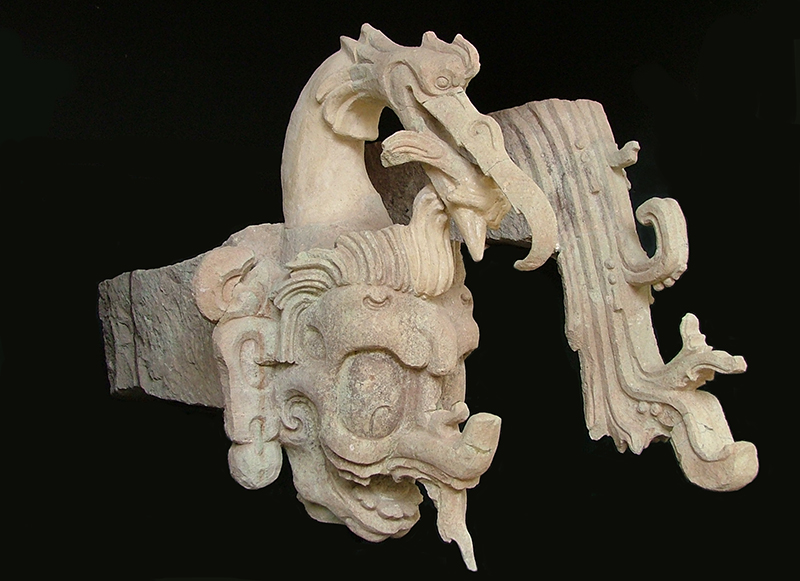

The Copán Sculpture Museum was built by the Honduran government and opened on August 3, 1996. It is beaultifully designed and contains many treasures. Photos of many of these pieces are accessible from arrows on the Copan map on this website, but many pieces are associated with buildings either buried or no longer in existence.
I present a few of these orphaned pieces from the museum, photographed from different angles for my gentle reader to savor and enjoy.

During the reign of Ruler 12, "Smoke Imix" (628–695 AD), a new high relief style developed which used tenoned stone sculptural features such as this water bird.
In the opinion of William Fash, Ruler 12 was perhaps the single most accomplished Copán dynast. Fash writes:
"Monolithic mosaic sculpture from Hijole Structure, buried beneath Structure 10L-26 [Hieroglyphic Stairway], dated to the reign of Ruler 12, showing high-relief sculpture of a water bird, and tenon used to secure it into the building."
William L. Fash, Scribes, Warriors and Kings: The City of Copán and the Ancient Maya, p. 120
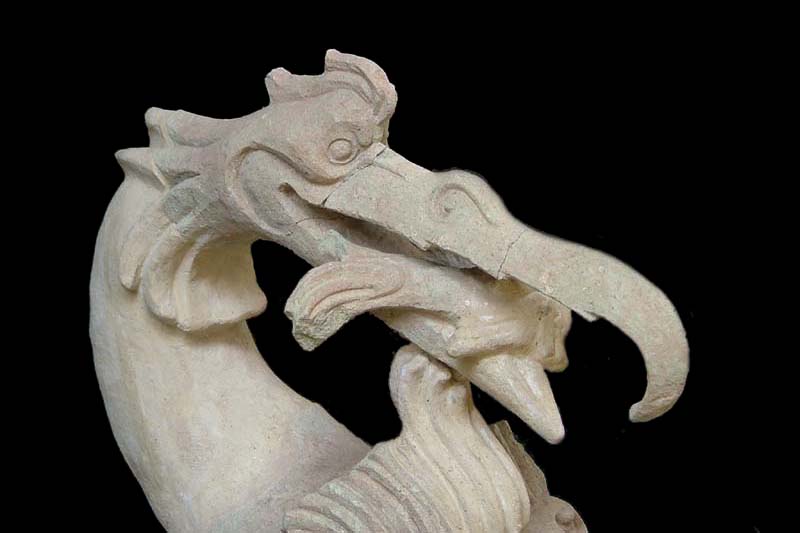
This extraordinary architectural ornament attests to a refined & sophisticated artistic tradition.

I find the vitality and energy of this piece absolutely astonishing.
"Carved from a single block of stone, this sculpture depicts the storm god Chaak in a particularly snake-like form, with upturned snout and sharp tooth."
Mary Miller & Simon Martin, Courtly Art of the Ancient Maya, p. 74
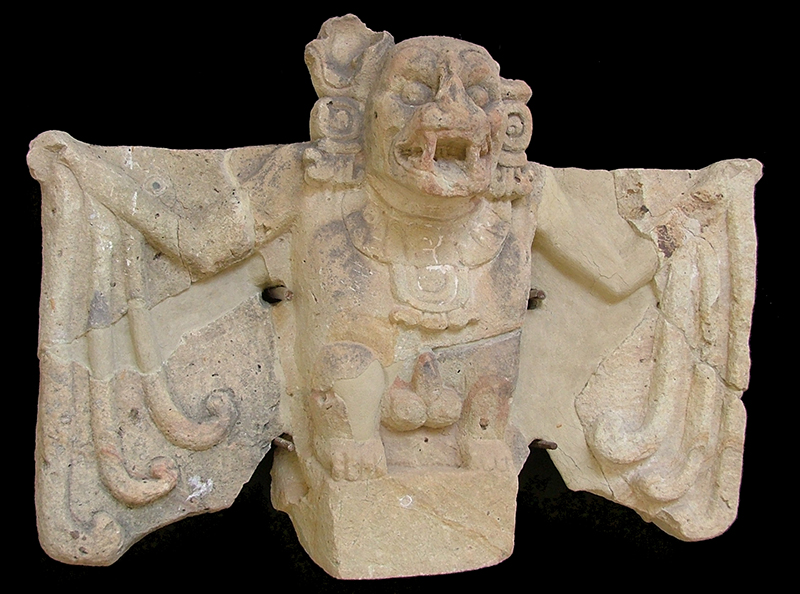
"Structure 10L-20, now completely destroyed by the ravages of the Copán River, once displayed an ominously decorated façade.
Members of the Peabody museum and Carnegie Institution expeditions record that a series of large sculptures of Killer Bats adorned the exterior of the building.
The bats were identified by death signs (%) on their pectorals, and the 'death eye' collars, as the same grisly Underworld denizens described in the Popol Vuh.
More recently, we have collected all the surviving fragments of these bats from the Acropolis and the local museum and storage facilities, and calculated that there were at least six of these Killer Bats."
William L. Fash, Scribes, Warriors and Kings: The City of Copán and the Ancient Maya, p. 129
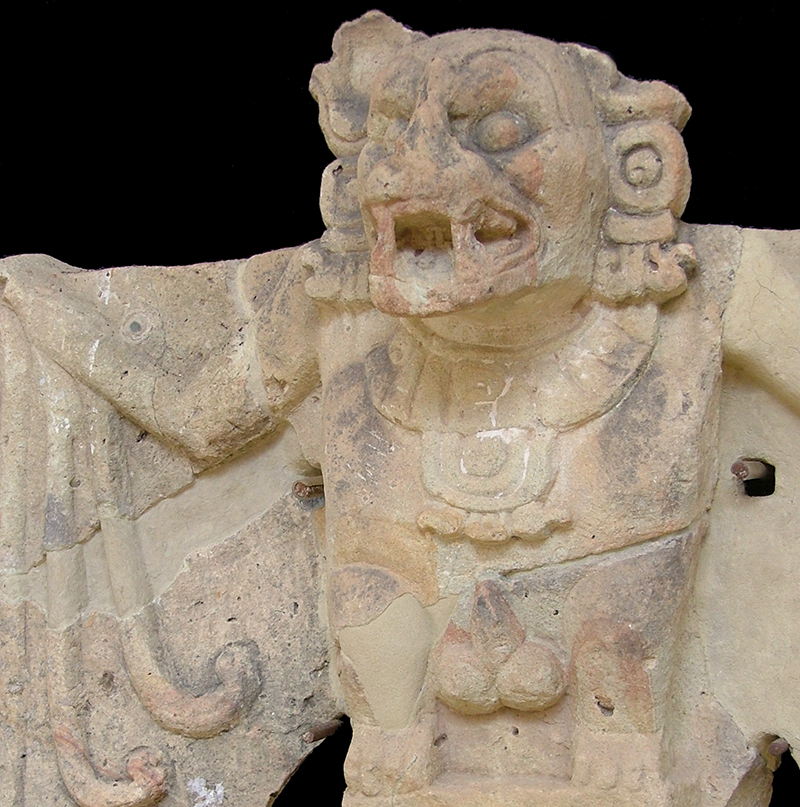
"Structure 10L-20 had been described by Palacio in the 16th century as a 'tower', and before its destruction by the river at the turn of this century it was partially excavated by Maudslay.
His excavations revealed that the super-structure had two floors, and that the building's cord-holders (for securing the doors) were set on the outside.
This placement was taken to indicate that the building was designed to be sealed from the outside, and led the Austrian architects Hasso Hohmann and Annegrette Vogrin to conclude that structure 10L-20 was a jail.
Its adornment with Killer Bats, its similarity to the 'House of Bats' described in the Popol Vuh, and the Lacandon Maya custom of confining prospective victims of sacrificial rites in wooden cages all strengthen this interpretation."
William L. Fash, Scribes, Warriors and Kings: The City of Copán and the Ancient Maya, p. 130
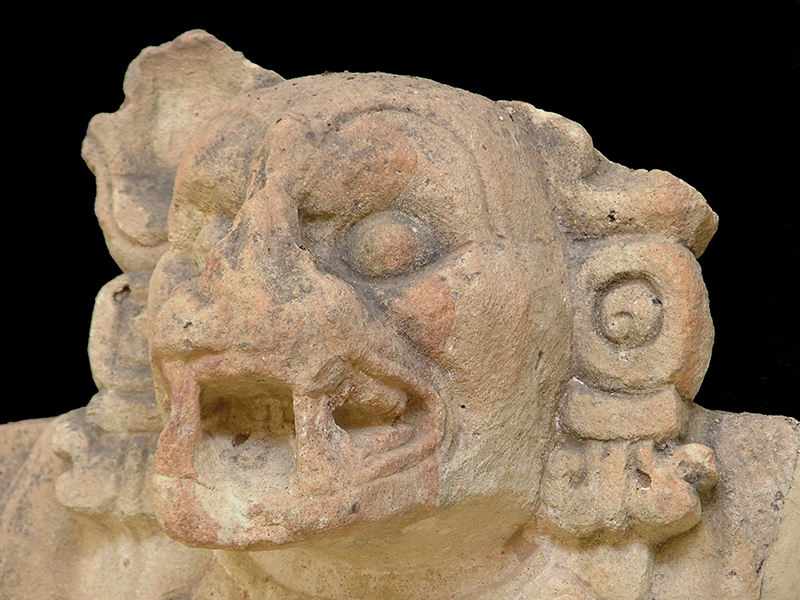
This bat sculpture was found in the 1930's, fallen from Structure 20 on the east edge of the Acropolis, and is associated with the Underworld, death, and sacrifice. There is a death sign shown on his chest.
In the Maya Popol Vuh legend, the Lords of Xibalba (Underworld) demanded that the Hero Twins survive for a night in the terrible "House of the Bats".
From sign in the Copan Sculpture Museum

The Killer Bat sculptures, as noted by Proskouriakoff in An Album of Maya Architecture, were roof ornaments. This one has been reassembled from fragments and repaired.
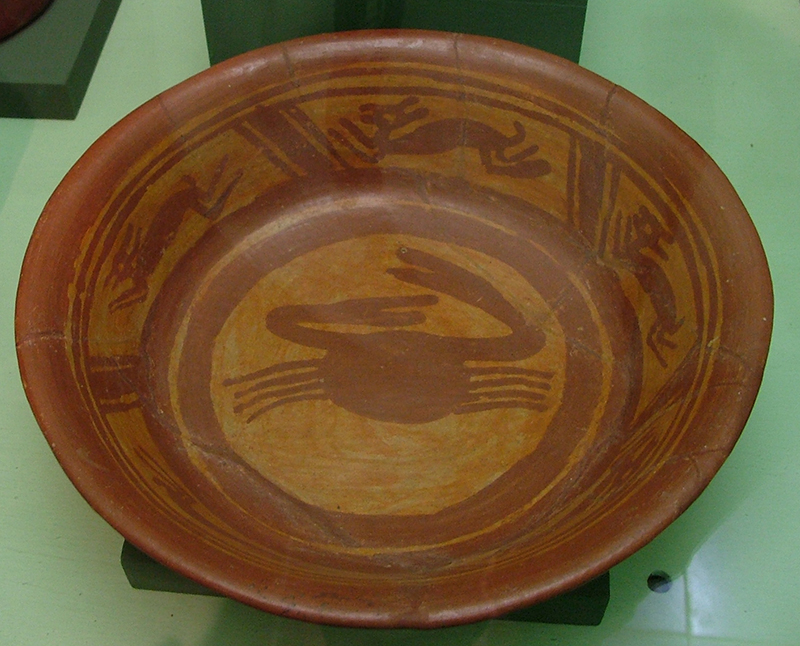
The Village of Copán Museum of Archaeology is a small and wonderful museum containing artifacts found at the site.
I have used many photos of their objects in the main parts of this website, for example the eccentric flints or the incensario lid effigies of Copán's rulers from Smoke Imix's tomb under the Hieroglyphic Stairway, but there are many interesting and whimsical objects here that haven't found a place in the main website. Here are just a few.
This crab plate from ancient Copan looks similar to painted pottery that can be purchased in markets today.
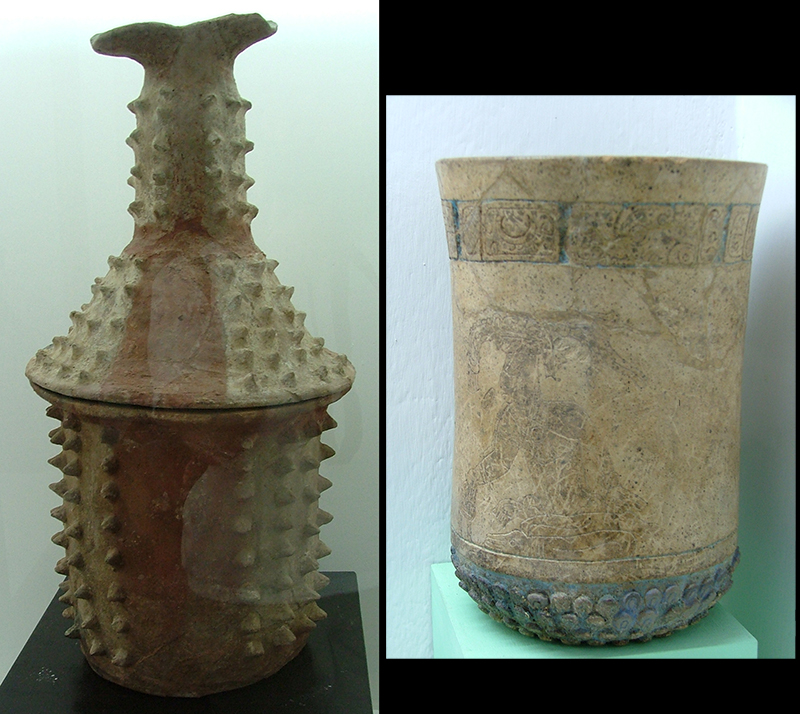
Note the faint image of a seated lord on the goblet and the glyphs painted and incised on its lip. Such inscriptions typically mentioned the owner or creator of the cup and its use, often reading as "his chocolate cup."

The site of Copán is blessed with two amazing museums. Neither should be missed!